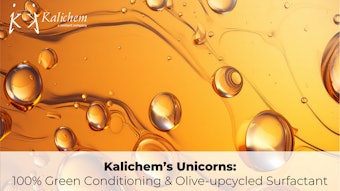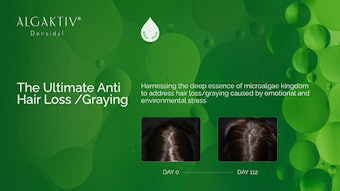With the Pollution Prevention Act of 1990, the United States established a national policy to prevent or reduce pollution at its source whenever feasible. The US Environmental Protection Agency (EPA) adopted the term green chemistry to mean the use of chemistry for pollution prevention. More specifically, EPA says “green chemistry is the design of chemical products and processes that reduce or eliminate the use and generation of hazardous substances.”
In 1995, EPA’s Office of Pollution Prevention and Toxics launched the Presidential Green Chemistry Challenge, a voluntary partnership to support further green chemistry research and recognize outstanding examples of green chemistry. The Presidential Green Chemistry Challenge Awards highlight successes in research, development and industrial implementation of technologies that prevent pollution at the source while contributing to the competitiveness of the innovators. An award is typically issued each year in each of five categories:
• Green Synthetic Pathways
• Green Reaction Conditions
• Designing Greener Chemicals
• Small Businesses
• Academic Investigators
Since 1996 when the first Presidential Green Chemistry Challenge Awards were announced, more than a thousand entries have been reviewed and 62 awards have been presented. The entries represent a wide range of industries, including transportation and agriculture and activites whose pollution consequences are much greater than that of cosmetics and personal care. But these latter industries can make their contribution to improving safety and reducing pollution.
The descriptions for all the entries (except for the years 2001–2004) are available at the EPA’s Web site. A keyword seach of those entries disclosed 14 that claimed a connection to the cosmetics and personal care industries. In almost every case the technologies described can be applied to other industries also. The purpose of this Web Exclusive is to review those 14 entries and provide a direct link to them (see Table 1) at the EPA. The link accesses a PDF file that can be searched using a Find command to locate the description of interest. The descriptions that follow are excerpted and edited from those PDF files. No references are provided in those files to support the facts and claims presented there. For that reason, no references are provided here.
A Green System to Reformulate Consumer Products
S.C. Johnson & Sons Inc. formulates and manufactures the Edgea brand of shave creams and gels as well as a wide variety of products for home cleaning, air care, insect control and home storage. Starting in 2001, the company developed Greenlistb, a system that rates the environmental footprint of the ingredients in its products. Through Greenlist, the company’s chemists and product formulators around the globe have instant access to environmental ratings of potential product ingredients.
a Edge is a trademark of S.C. Johnson.
b Greenlist is a trademark of S.C. Johnson.
Greenlist uses four to seven specific criteria to rate ingredients within 17 functional categories. The company enlisted the help of suppliers, university scientists, government agencies, and nongovernmental organizations (NGOs) to ensure that the rating criteria were meaningful, objective and valid. These criteria include vapor pressure, octanol/water coefficient, biodegradability, aquatic toxicity, human toxicity, European Union Classification, source/supply, and others as appropriate.
The Greenlist process assigns an environmental classification (EC) score to each ingredient by averaging its scores for the criteria in its category. EC scores range from Best (3) to Restricted Use Material (0). The company lowers the EC score for chemicals with other significant concerns including PBT (persistence, bioaccumulation, and toxicity), endocrine disruption, carcinogenicity and reproductive toxicity.
Today, Greenlist provides ratings for more than 95% of the raw materials used by S.C. Johnson, including solvents, surfactants, inorganic acids and bases, chelants, propellants, preservatives, insecticides, fragrances, waxes, resins, nonwoven fabrics and packaging. Company scientists have also developed criteria for dyes, colorants and thickeners and are working on additional categories as well.
In recent years, S.C. Johnson has used Greenlist to reformulate multiple products to make them safer and more environmentally responsible, though no Greenlist reformulation has been required for the Edge line. Across all of its product lines, S.C. Johnson reformulations since 2001 have removed more than 61 million pounds of VOCs from the environmental footprint of the company’s products, equivalent to the amount produced by approximately 656,000 cars in a year.
Greener Ingredients
Alkyl polyglycoside surfactants: Henkel Corp. manufactures alkyl polyglycoside surfactants, a class of nonionic surfactants manufactured from renewable resources including fatty alcohol, derived from coconut and palm oils, and glucose derived from corn starch. APG surfactants are more innocuous to the environment than petrochemical-based technologies, are readily biodegradable, and have very low ecotoxicity. They have been marketed to the detergent and personal care industries since 1990.
A polysaccharide to replace petrochemicals: Montana Polysaccharides Corp. suggests levan, a multipurpose exopolymer, as a raw material to replace petrochemicals in certain personal care products and in the products of many other industries. This polymer of fructose has an extremely low intrinsic viscosity so that it requires less energy to handle, does not swell in water, is heat- and acid-stable, and causes no skin or eye irritation, even on prolonged, direct contact. Unlike products from corn, soy, and waste biomass that require significant amounts of energy and solvents for separation from cells, levan is naturally exported from producing cells, so it is a cost-effective raw material. Levan can be derivatized to make powerful surfactants.
Thioglycolic acid from green chemistry: Arkema Inc. uses a green chemistry to manufacture thioglycolic acid (TGA or mercaptoacetic acid) without using hydrogen sulfide (H2S) as a feedstock. H2S is a poisonous, flammable, colorless gas that is regulated as an air pollutant, a water pollutant and a hazardous waste. Arkema replaced the H2S in its manufacturing process with sodium hydrosulfide (NaSH). NaSH is safer for workers, is subject to fewer air, water, and waste regulations, is comparable to H2S in price, and is readily available in consistently high purity. TGA is used in hair waving formulations.
A solventless process for making tackifiers and adhesives: The Argonne National Laboratory at the US Department of Energy developed a process to make tackifier dispersions for pressure-sensitive adhesives (PSAs) used in cosmetics, personal hygiene and many other industries. Traditionally, PSAs were made by combining tackifier dispersion with latex dispersions. Preparation of the tackifier dispersions typically involved organic solvents for dissolving high temperature resins. During subsequent heating to evaporate and recover excess solvent, some solvent emissions occurred; over time any residual solvents in the adhesive also evaporated into the environment.
The Argonne process pulverizes the resin to an average particle size of less than 5 μm and then directly forms the dispersion in water, in just a few minutes, without dissolving the resin in solvents, melting it or using excess water. The process does not require solvents or heat to process either high- or low-temperature resins. Argonne’s process is cost-effective and energy-efficient. It reduces the cost of manufacturing water-based tackifier dispersions by more than 35% and uses less than 25% of the energy required by conventional processes, thereby reducing greenhouse gas emissions.
Biosurfactants to replace petroleum-derived surfactants: Jeneil Biosurfactant Co. developed biobased surfactants that are less toxic and more biodegradable than conventional petroleum-based surfactants.
Jeneil’s rhamnolipid biosurfactant products provide good emulsification, wetting, detergency and foaming properties, along with very low toxicity. They are readily biodegradable and leave no harmful or persistent degradation products. Their superior qualities make them suitable for many diverse applications.
Rhamnolipid biosurfactant is a naturally occurring extracellular glycolipid that is found in the soil and on plants. Jeneil produces this biosurfactant commercially in controlled, aerobic fermentations using particular strains of the soil bacterium, Pseudomonas aeruginosa. The biosurfactant is recovered from the fermentation broth after sterilization and centrifugation, then purified to various levels to fit intended applications.
In many applications, these biosurfactants can replace less biodegradable synthetic or petroleum-derived surfactants. Further, these biosurfactants have excellent synergistic activity with many synthetic surfactants and, when formulated together in a cosurfactant system, can allow a substantial reduction in the synthetic surfactant component.
Greener Processes
Biotechnological routes to ‘tailored’ polymeric products: Polymers could be made from renewable resources that involve all-aqueous, green chemicals by using microbial polymerizations, except for one problem: the inability to control product structural variables that ultimately determine functional properties.
Richard A. Gross in the department of chemistry, University of Massachusetts at Lowell and David L. Kaplan, department of chemical engineering, Tufts University addressed this problem by disclosing a family of technologies that demonstrated unprecedented levels of control for nonribosomal-mediated microbial polymerizations.
These researchers prepared lipoheteropolysaccharides from renewable resources and developed innovative methods to control the product’s fatty acid structure and the degree of substitution. This has led to a diverse family of new biodegradable bioemulsifiers that have wide applicability for biocosmetics and other fields.
A second technology area has used polyethylene glycols to regulate microbial polyester molecular weight, repeat unit composition, and alter repeat unit sequence distribution. Furthermore, this strategy can be used to form microbial polyester-polyethyleneglycol diblock copolymers. It is now possible, therefore, to consider the in vivo preparation of synthetic-natural diblocks. This technology created a number of opportunities for the preparation of completely biodegradable interfacial agents for blends, the termination of chains with reactive end-groups for coupling pharmacologically active molecules, and the engineering of surfactant molecules.
A third technology area has been the development of new fermentation routes to anionic γ-polyglutamic acid from renewable resources such as glucose. γ-Polyglutamic acid is a cosmetic thickener. These routes have the potential to replace millions of pounds of anionic polymers, such as polyacrylic acid, which is nonbiodegradable and persistent in nature.
Using CLECS to broaden the use of enzymes as industrial catalysts: Enzymes are safe and efficient industrial catalysts, but they did not exhibit the chemical and physical stability associated with more conventional, small-molecule organic and inorganic heterogeneous catalysts. Not, at least, until the 1990s when Altus Biologics developed a conceptually simple and broadly applicable solution.
The solution was to formulate the enzymes in a cross-linked crystalline form—a CLEC—that enables the enzyme to be used under the harsh chemical, physical and mechanical conditions that characterize most practical industrial processes. More than 20 enzymes have been formulated as CLECs and Altus Biologics has demonstrated their utility on a pilot scale in consumer products such as detergents and cosmetics, among a range of applications.
Reducing copper catalyst content in ATRP: Atom Transfer Radical Polymerization (ATRP) is a controlled, transition-metal-mediated process to polymerize appropriate monomers by radical mechanisms; it was discovered in 1995 in the laboratories of Krzysztof Matyjaszewski, department of chemistry, Carnegie Mellon University. Many industrial research programs are actively using this process to prepare polymers for a broad spectrum of applications including cosmetics.
Since 1995, Matyjaszewski’s group has led efforts to develop more active catalyst systems targeted at reducing the levels of metals in ATRP systems by using hybrid catalysts in processes called Activators Generated by Electron Transfer (AGET) and Activators ReGenerated by Electron Transfer (ARGET). The new processes will eliminate all hazardous substances from the products made by ATRP and from the waste streams of industrial production.
Greener Products
Lowering VOCs in hair sprays: In 1996 Eastman Chemical Co. developed a water-dispersible sulfopolyester that allowed hair sprays to be formulated with 55% ethanol, which was significantly less than the contemporary industry standard of 80% VOC. Switching all of the 1996 hair spray market from the then current standard of 80% VOC to 45% VOC would have resulted in a total reduction of VOC emissions of around 55 million pounds per year. In general, sulfopolyester dispersions may be used as low-VOC film formers for a variety of cosmetic products in addition to hair sprays; therefore, an even larger potential for VOC emission reduction exists.
Alternatives to toxic microbicidal chemicals: Almost all traditional, widely used disinfecting and sanitizing products contain ingredients that are toxic or potentially toxic, are environmentally hazardous, or have a high potential for accidents.
Microcide Inc. developed a technology of safe, biodegradable, nonpolluting products as alternatives to toxic microbicidal chemicals. Microcide uses ingredients listed by the Food and Drug Administration and EPA as biodegradable, generally recognized as safe (GRAS), food additives, safe, and/or nonpolluting. With these ingredients, Microcide develops broad-spectrum microbicidal products as alternatives to toxic and oxidizing chemicals for the food processing, personal care and health industries.
Microcide’s products use surfactants at low pH. Raising the pH diminishes the microbicidal properties, allowing safe environmental disposal and biodegradation of the products after use. These products selectively kill microorganisms on food-contact surfaces, on fresh fruits and vegetables, and on body parts (including mucosal and skin surfaces) without covalent chemical reactions.
Environmentally and cosmetically acceptable insect repellent: Unpleasant odors, stickiness, and cautions associated with many DEET-containing formulations of insect repellent too frequently may deter people from using these products, thus leaving themselves unprotected from the risk of bites, infection and disease. An alternative is picaridin, a custom molecule that has almost no scent to humans. It was developed under a hypothesis that repellency is triggered by action on specific olfactory receptors of insects. It is a safe, effective and environmentally friendly insect repellent that people will use, according to Lanxess Corp. and its parent company, Lanxess Deutschland GmbH (formerly part of Bayer AG).
Biocatalytic production of a soy-based sunscreen active: iSoy Technologies Corp. manufacturers a sunscreen active that meets all the criteria for a green chemical and a green production process. The chemical is made by biocatalysis of renewable feedstocks: ethanol, ferulic acid and soybean oil. Ferulic acid is 4-hydroxy-3-methoxycinnamic acid, a phenolic compound widely distributed in plants. The biocatalyst is immobilized Candida antarctica lipase B in a solvent-free, packed-bed reactor. This enzyme efficiently transesterifies the ethyl ester of ferulic acid onto the glycerol backbone of vegetable oil. The result is a mixture of feruloylated monoacyl- and diacylglycerols. The biocatalyst retains good activity for months under continuous operation. The desired feruloylated acylglycerols are separated from unreacted ethyl ferulate and ferulic acid by molecular distillation or liquid carbon dioxide extraction.
Recovered ethyl ferulate and ferulic acid are returned to the process, resulting in very high atom efficiency. The manufacturing process does not use any organic solvents. The resulting nontoxic, biodegradable product has excellent properties as a UVA and UVB absorber, free-radical trap and antioxidant, making it a superior substitute for conventional petroleum-based sunscreen active agents and skin care ingredients.
Nail polish bottles with greener labels: RevTech Inc. responded to a need in the glass decorating industry for a decorated glass container that is aesthetically pleasing and durable and can be obtained in a cost-effective, environmentally friendly and energy-efficient manner. Envirogluvc technology from RevTech offered a green alternative to paper labels, decals and applied ceramic labeling.
c Envirogluv is a trademark of RevTech Inc.
Envirogluv is a glass decorating technology that directly silk-screens radiation-curable inks onto glass, then cures the ink almost instantly by exposure to UV light. The result is a crisp, clean label that is environmentally sound, with a unit cost that is about half of that incurred with traditional labeling.
Envirogluv inks have no VOCs and no toxic heavy metals. These organic-based UV-curable inks were initially developed for Revlon and first used in the early 1990s for high speed printing and filling of nail enamel bottles and hot stamping of environmentally acceptable foils to emulate the look of raised silver and gold. Since then the process has produced hundreds of millions of units. Revlon reportedly saved millions of dollars over the years through energy, space and labor efficiencies as compared to its traditional heat-cured glass-decorating process. Today Envirogluv is used primarily in the food and beverage industry.
Comment
The Presidential Green Chemistry Challenge Awards Program invites nominations that describe the technical benefits of a green chemistry technology as well as human health and environmental benefits. The Awards Program is open to all individuals, groups, and organizations, both nonprofit and for profit, including academia, government and industry. Self-nominations are allowed and expected. Entry details are at the EPA’s Web site.2 Nominations are due December 31 each year for an awards ceremony normally held in late June the following year in Washington, D.C.
There is no financial component in a Presidential Green Chemistry Challenge award, but it does provide national recognition of outstanding chemical technologies that incorporate the principles of green chemistry into chemical design, manufacture and use, and that have been or can be used by industry in achieving their pollution prevention goals. On the other hand, it may be that the word green appears in the name of this presidential award because national recognition is very flattering, and it leaves those who didn’t win feeling slightly green with envy.
Reproduction of all or part of this article is strictly prohibited. To get a copy of this article or others from a searchable database, visit the C&T magazine Article Archives at www.CosmeticsandToiletries.com/articles.
References
1. www.epa.gov/greenchemistry/pubs/whats_gc.html (Accessed Jan 22, 2008)
2. www.epa.gov/greenchemistry/pubs/pgcc/howto.html (Accessed Jan 22, 2008)
Table 1.
Presidential Green Chemistry Challenge Awards Program entries having technologies with declared application for the cosmetics and personal care industries during the program’s first 12 years. Complete description of each technology by year is available at the links below. (Note: Entries for 2001–2004 are not posted on the EPA’s Web site and could not be included in this table.)
Links
http://www.epa.gov/greenchemistry/pubs/docs/award_entries_and_recipients2007.pdf http://www.epa.gov/greenchemistry/pubs/docs/award_entries_and_recipients2006.pdf http://www.epa.gov/greenchemistry/pubs/docs/award_entries_and_recipients2005.pdf
http://www.epa.gov/greenchemistry/pubs/docs/award_entries_and_recipients2000.pdf
http://www.epa.gov/greenchemistry/pubs/docs/award_entries_and_recipients1997.pdf
http://www.epa.gov/greenchemistry/pubs/docs/award_entries_and_recipients1996.pdf
Notes
a Recipient of a Designing Greener Chemicals Award
b Recipient of a Small Business Award. Description at http://www.epa.gov/greenchemistry/pubs/docs/award_recipients_1996_2007.pdf
c Recipient of a Small Business Award










